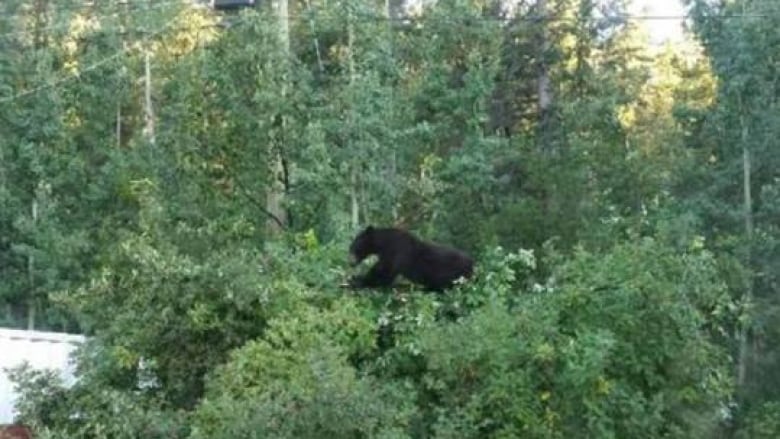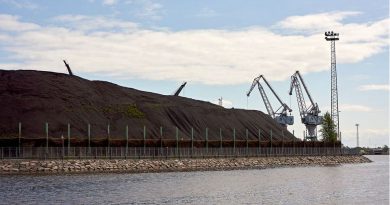Relocating bears won’t fix conflicts with humans, say environment officials in northwestern Canada

Relocating problem bears cannot be seen as a solution to Yukon’s rising number of human/bear conflicts, warn conservation officers with the Department of Environment.
Incidents rose by 25 per cent last year, marking the busiest season for the territory on record. The government released its numbers on December 18th.
There were 267 incidents in 2018, but fewer bears had to be killed. Conservation officers euthanized 33 bears, while an additional 21 were killed “in defence of life or property,” according to Yukon’s Department of Environment. That’s a total of 54, down from 65 in 2017.
Translocating involves moving a bear by truck or helicopter at least 100 km away from a site where it’s come into conflict with humans. 58 bears were translocated in Yukon this year, nearly six times as many as in 2017.
Each bear is evaluated on a case by case basis, but there were more sows with cubs this year, who get prioritized for relocation rather than euthanasia for conservation reasons.
Like ‘waking up in a new country with a really bad tattoo’
Environment officials say that while they did translocate more bears this year, it means Yukoners aren’t managing their attractions and it’s not a miracle solution.
The process is also extremely risky for staff and for the bears, leaving the animals feeling stressed and disoriented.

“I liken it to basically waking up in a new country with a really bad tattoo, a new earring and a really bad hangover,” said Aaron Koss-Young, a conservation officer who specializes in human/wildlife conflict prevention.
“Just imagine a bear waking up somewhere else in that same disposition not knowing where its food sources are or who its friends or enemies are.”
The goal is for the relocated bears to adapt to the natural environment again, but the department says many return very quickly to the area where they discovered good, human-sourced food.
Cub crosses rivers, mountains to return to Whitehorse
Officials point to one cub as a particular example.
It was part of a family of black bears seen frequently in the Riverdale neighbourhood over the summer. Its mother had first discovered compost heaps there in 2012. She was translocated that year, but Koss-Young says she returned “pretty much immediately” and lived around Grey Mountain.
Facing a bad berry crop this year, the family discovered a lush chokecherry tree in one Riverdale backyard and couldn’t be scared away.
Three conservation officers spent several hours immobilizing the four bears, and transporting them 100 km north of the city.
They were back within ten days.
“This bear’s only crime was really using its nose to find food sources…that fit the bill for feeding its cubs and itself,” said Koss-Young.
A team of conservation and RCMP officers then moved the bears by helicopter to a different, more berry-rich habitat outside of Whitehorse. When they were released, the cub ran in a different direction than its mother and siblings, who immediately started snacking on berries nearby.
Five days later the cub was back in Riverdale.
“That bear had to go over two major rivers, and two mountain ranges just to get back to Whitehorse. It was extremely unusual for a cub that size,” Koss-Young said. “But you can see that hunting sense a bear is famous for. It’s got in mind exactly where it wants to go.”
That cub was moved again, but eventually got into unsecured dog food in the Tagish area, and had to be euthanized.
“So you see translocation isn’t a solution,” said Koss-Young. “Prevention and management of your attractants is the best practice.”
‘We aren’t doing enough’
Koss-Young says a bad berry crop across the south of the territory, and a failure to manage bear attractants were to blame.
“Whitehorse continues to grow and we aren’t doing enough to manage our attractants.”
He says in Whitehorse alone there were 43 bear/human conflicts. 16 black bears and four grizzlies had to be relocated from the city, and ten black bears were killed by conservation officers “to protect public safety.”
“These numbers are greater than any other year in our records for the City of Whitehorse,” he said.
Koss-Young and other environment officials are calling on Yukoners to go above and beyond to manage bear attractants in their yards. They say it needs to be a year-round concern.
Related stories from around the North:
Canada: Thousands of bear tags are sold each year in northwest Canada, so why are so few hunted?, CBC News
Finland: Finland’s environment suffering from human activity, report says, Yle News
Norway: Could drones help prevent polar bear attacks on the Arctic archipelago of Svalbard?, The Independent Barents Observer
Russia: Snow crabs invading Russia’s Arctic nuclear waste dump, The Independent Barents Observer
United States: After deadly bear attack, hikers in Anchorage, Alaska weigh risks, Alaska Public Media



